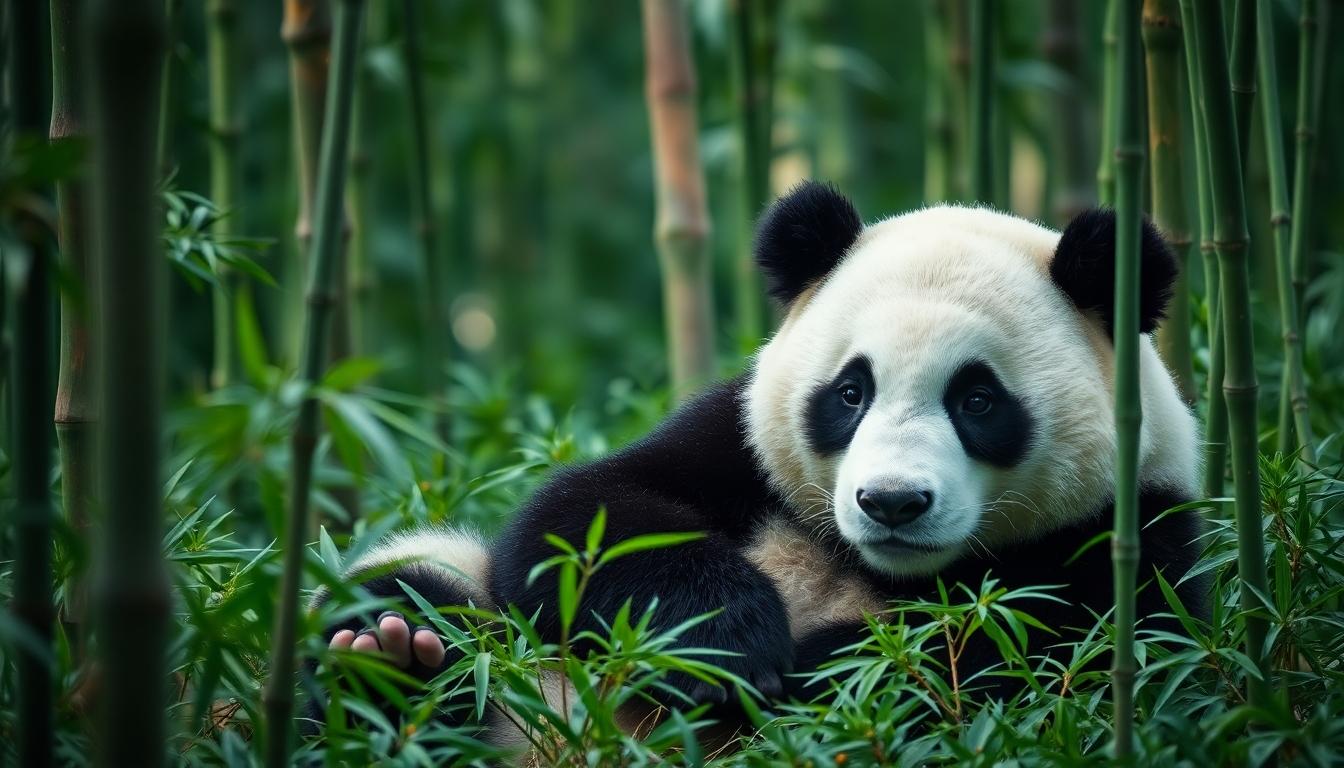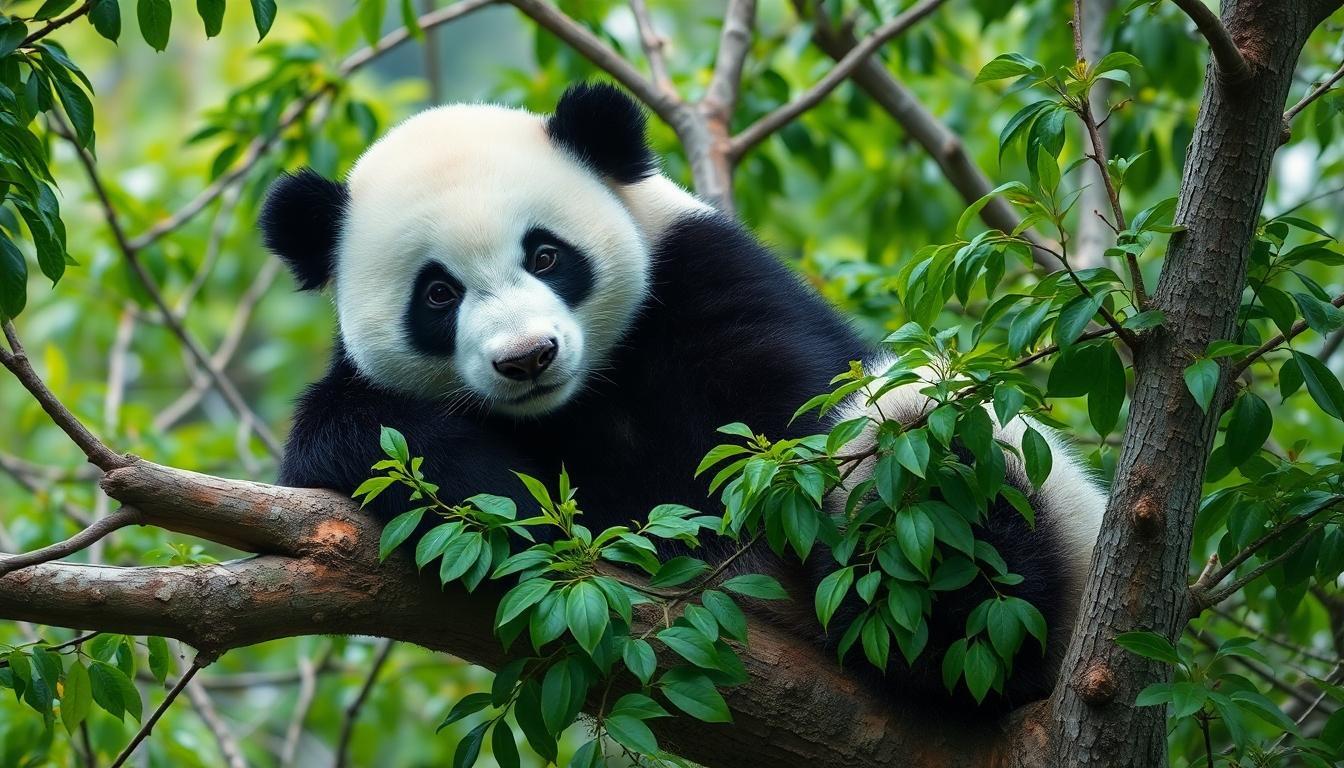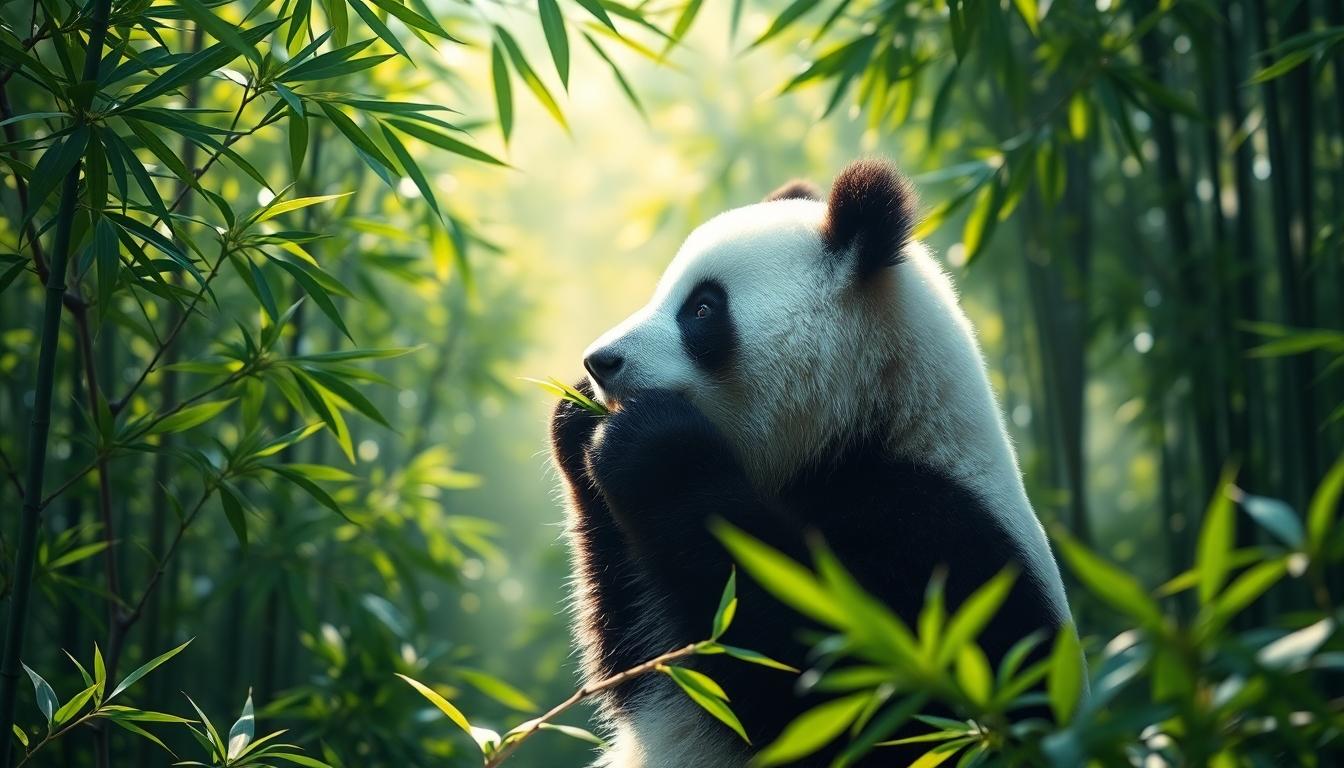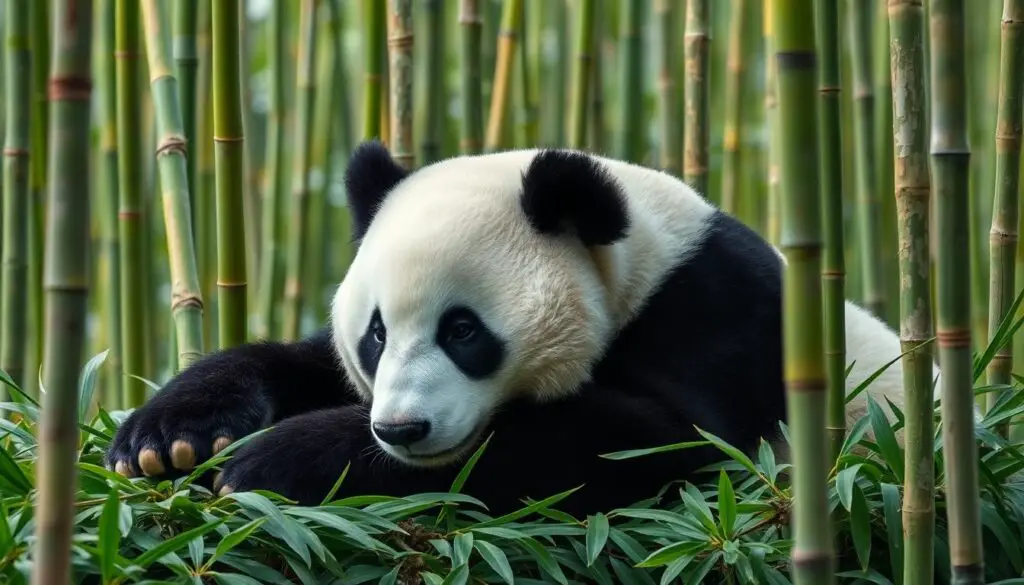Have you ever wondered what makes the panda such a beloved symbol worldwide? These remarkable black and white bears capture our hearts not just with their adorable appearance but through their rich symbolic meaning across various cultures.
We’ll explore how pandas represent balance, resilience, and gentle strength in Eastern traditions, particularly in Chinese culture where they’re revered as symbols of peace and harmony. From ancient folklore to modern conservation efforts, the panda’s symbolism has evolved while maintaining its powerful presence in our collective consciousness.
The Ancient Origins of Panda Symbolism
The panda’s symbolic journey began over 2,500 years ago in ancient China, where these distinctive black and white bears were first documented in Chinese literature and art. Historical records from the Han Dynasty (206 BCE – 220 CE) mention pandas as rare creatures that were occasionally presented as gifts to emperors, signifying their status as treasured animals from early times.
Chinese mythology associates pandas with positive forces, viewing them as creatures that ward off evil spirits and natural disasters. Ancient tales describe pandas as mighty forest guardians with supernatural strength, capable of fighting off predators and protecting their territory with remarkable resilience. Their distinctive coloring contributed to their mystical reputation, with traditional Taoist philosophy interpreting their black and white markings as physical manifestations of yin and yang energies.
In ancient Chinese medical texts, various panda body parts were believed to possess healing properties. Panda urine was thought to dissolve swallowed needles and other metal objects, while their pelts were considered effective treatments for controlling menstruation and reducing fever. These medicinal associations further elevated the panda’s cultural significance beyond merely being an interesting forest dweller.
Archaeological discoveries have unearthed panda representations in tombs dating back to the Shang Dynasty (1766-1050 BCE), suggesting their early cultural importance. Ceremonial jade figurines shaped like pandas have been found in burial chambers of nobility, indicating pandas were connected to afterlife beliefs and possibly served as spiritual guides between worlds.
Tribal communities in ancient Sichuan province (the panda’s native region) developed folklore portraying pandas as creatures deserving reverence and protection. Local creation myths from the Qiang people describe pandas as sacred animals with connections to ancestral spirits, establishing the foundation for conservation values that would eventually spread throughout Chinese culture and beyond.
Pandas in Chinese Cultural Tradition

Giant pandas have been integral to Chinese cultural heritage for thousands of years, embodying various symbolic meanings that continue to resonate today. Their distinctive appearance and gentle nature have earned them a revered place in Chinese traditions, folklore, and diplomatic relations.
Yin and Yang Representation
The panda’s striking black and white coloration perfectly embodies the Taoist concept of yin and yang, representing the harmonious balance between opposing forces in nature. This duality in their appearance aligns with traditional Chinese philosophical ideals about equilibrium in the natural industry and human existence. Their contrasting fur serves as a living reminder of how complementary opposites can coexist in perfect harmony, making pandas powerful symbols of unity and balance. The ancient Chinese recognized this visual representation of cosmic duality, considering pandas as physical manifestations of nature’s fundamental principles of balance.
Symbol of Peace and Harmony
Pandas have long served as ambassadors of peace and friendship throughout Chinese history. During the Tang Dynasty (618–907 CE), these gentle creatures were presented as diplomatic gifts to foster goodwill between China and other nations. This tradition continues in modern times through “panda diplomacy,” where China loans pandas to strengthen international relationships and promote cultural exchange. Their calm demeanor and peaceful nature reinforced their association with tranquility, with historical beliefs suggesting their presence could prevent conflicts and natural disasters. Ancient Chinese warriors carried panda imagery into battle to invoke courage, while emperors kept pandas in imperial gardens to ward off evil spirits. Today, pandas remain powerful symbols of environmental conservation and cross-cultural cooperation on the global stage.
Panda Symbolism in Modern Conservation Efforts

The giant panda stands as a globally recognized conservation icon, symbolizing habitat preservation and biodiversity protection worldwide. Its distinctive black and white appearance and endangered status have made it the perfect ambassador for conservation efforts across multiple platforms.
The Industry Wildlife Fund Logo
WWF adopted the panda as its iconic logo in 1961, drawing inspiration from Chi-Chi, a panda residing at the London Zoo. Sir Peter Scott designed this emblematic symbol, creating a mark that’s instantly recognizable across cultural boundaries due to its simplicity and universal appeal. The black and white logo remains central to WWF’s identity after more than six decades, effectively communicating the organization’s conservation mission without requiring translation. This enduring symbol emphasizes the panda’s critical role as a flagship species that attracts attention to broader environmental causes through its charismatic appeal.
Diplomatic “Panda Diplomacy”
Pandas function as powerful diplomatic tools in international relations, particularly as representatives of Chinese goodwill toward other nations. China has strategically used pandas throughout modern history to strengthen political relationships, offering these rare animals as gestures of friendship and cooperation. This practice aligns perfectly with the panda’s status as China’s national symbol and cultural “warrior,” highlighting its important political importance beyond mere conservation. Contemporary agreements have evolved from outright gifts to collaborative research loans, typically involving substantial conservation funding and scientific exchange programs. These diplomatic arrangements generate international publicity while supporting conservation initiatives, creating a unique intersection between wildlife protection, political strategy, and cultural symbolism.
Pandas as Symbols of Resilience and Adaptability

Pandas exemplify remarkable resilience through their ability to adapt to challenging environments even though facing many threats to their existence. Their survival in harsh mountain habitats demonstrates an impressive capacity to overcome obstacles, making them powerful symbols of perseverance. Giant pandas have evolved specialized adaptations like their unique “thumb” (actually a modified wrist bone) that enables them to efficiently strip bamboo, their primary food source.
The panda’s dietary adaptation represents one of their most notable resilience traits. These creatures derive 99% of their nutrition from bamboo even though being members of the carnivore family. Their digestive systems have evolved to process this fibrous plant material, allowing them to survive on a food source that provides relatively low nutritional value. This remarkable dietary flexibility showcases their evolutionary adaptability and survival instinct.
Throughout history, pandas have faced many environmental challenges yet continued to endure. Their population decline from habitat loss and climate change highlighted their vulnerability, but conservation efforts have helped populations stabilize. The panda’s resilience story connects deeply with human experiences of overcoming adversity, perhaps explaining part of our fascination with these creatures.
The black and white coloration of pandas further emphasizes their adaptability, serving as excellent camouflage in their snowy and shadowy forest habitats. This natural protection mechanism helps them blend into both snowy landscapes and dense forests, demonstrating evolutionary adaptation at work. Their thick fur provides insulation against the cold mountain temperatures of their native central Chinese highlands.
In many Eastern philosophies, the panda’s ability to thrive by finding balance reflects core teachings about resilience through harmonious living. Their integration of opposing energies—represented by their distinct black and white markings—teaches us about finding strength through balance rather than conflict. This concept of resilient harmony mirrors the “peace and harmony” symbolism mentioned earlier and reinforces pandas as powerful representations of thriving through balance.
Spiritual and Emotional Meaning Behind Panda Symbolism

Panda symbolism encompasses profound spiritual and emotional meanings that reflect the creature’s unique nature and distinctive characteristics. These gentle giants carry important symbolic weight across various spiritual traditions and emotional contexts.
Balance and Gentle Strength
The panda’s iconic black and white coloration embodies the concept of yin and yang, representing perfect balance and harmony in life. This striking contrast in their appearance serves as a powerful reminder of the importance of equilibrium between opposing forces such as work and rest, action and reflection, and strength and gentleness. Their coloration isn’t merely aesthetic but carries deep philosophical significance rooted in ancient Eastern wisdom traditions.
Pandas exemplify the rare combination of physical power and gentle temperament, demonstrating that true strength doesn’t require aggression. Their calm determination and peaceful nature teach us that power coupled with compassion creates a more sustainable and harmonious approach to life’s challenges. This gentle strength manifests in their daily activities—from their methodical bamboo consumption to their patient care for their young—offering spiritual lessons about persistence without forceful exertion.
Nurturing and Family Bonds
Pandas are inherently heart-centered creatures, symbolizing exceptional nurturing abilities and emotional intelligence. Their dedicated maternal care highlights the importance of emotional connections and attentive nurturing, traits that resonate deeply across cultures. In various folklore traditions, pandas are viewed as guardians, protecting not just their young but embodying a broader protective spiritual energy.
The significance of pandas extends into family symbolism, particularly in Chinese culture where they’ve historically represented good fortune and safety for children. A mother panda’s devotion to her cub—spending nearly two years raising and teaching her offspring—represents the ultimate symbol of familial dedication and protective parenting. This connection to family values reinforces their spiritual association with hearth, home, and the sacred bonds between parents and children.
Pandas’ remarkable harmony with their natural environment further emphasizes their spiritual significance as symbols of balance between human existence and the natural industry. Their peaceful coexistence within forest ecosystems demonstrates an ideal relationship with nature that many spiritual traditions aspire to emulate. This connection to the natural industry reinforces pandas as powerful symbols of environmental stewardship and spiritual ecology.
Pandas in Art, Literature, and Popular Media

Iconic Representations in Visual Arts
Pandas have secured their place in visual arts as compelling subjects that capture imagination and convey powerful symbolism. Their distinctive black and white markings create striking visual contrast that artists frequently use to represent duality and balance in their work. Traditional Chinese paintings often feature pandas in bamboo forests, emphasizing their harmonious relationship with nature. Contemporary artists incorporate panda imagery to promote conservation awareness and celebrate their status as beloved cultural icons.
Literary Significance and Storytelling
In literature, pandas emerge as characters embodying gentleness, wisdom, and resilience. Chinese folklore contains many tales where pandas serve as peaceful mediators or wise guides in human conflicts. Children’s books worldwide feature panda protagonists to teach valuable lessons about environmental stewardship and friendship. Their contemplative nature and bamboo-centered lifestyle make them perfect literary vehicles for exploring themes of simplicity and mindfulness in both Eastern and Western narratives.
Influence in Popular Media and Entertainment
Pandas have achieved remarkable popularity in modern entertainment media, most notably in DreamWorks’ “Kung Fu Panda” franchise. This series transformed the gentle giant into a heroic figure while maintaining its core symbolic associations with balance and inner strength. Documentary films like National Geographic specials highlight pandas’ conservation challenges, further cementing their status as environmental ambassadors. Animated shorts, video games, and social media content frequently showcase pandas, leveraging their innate appeal to engage audiences of all ages.
Commercial and Merchandising Impact
The commercial presence of panda imagery extends across countless products worldwide, from plush toys to clothing and accessories. Major brands incorporate panda symbolism to evoke feelings of warmth, trustworthiness, and ecological consciousness. Panda-themed merchandise often connects to conservation initiatives, with portions of proceeds supporting wildlife protection efforts. Their universal appeal transcends cultural barriers, making pandas particularly effective commercial symbols in global marketing campaigns and international brand strategies.
Diplomatic Representation in Media
Media coverage of panda diplomacy enhances China’s cultural influence internationally. News stories about panda loans to foreign zoos frequently highlight the diplomatic significance of these arrangements, portraying them as gestures of goodwill and friendship between nations. This media framing strengthens the panda’s symbolic association with peace and cross-cultural understanding. Documentary films and news features regularly emphasize how pandas in foreign zoos attract visitors while simultaneously promoting positive images of China abroad, demonstrating their effectiveness as soft power instruments.
Conclusion
The panda’s journey from ancient Chinese symbol to global conservation icon showcases its unique power to bridge cultures and inspire environmental action. Through their distinctive appearance and gentle nature pandas continue to teach us valuable lessons about balance resilience and harmony.
As we’ve explored the rich tapestry of panda symbolism we’re reminded that these remarkable creatures represent more than just adorable wildlife. They embody our deepest aspirations for peaceful coexistence with nature.
Their black and white symbolism invites us to find balance in our own lives while their survival story offers hope for endangered species worldwide. The panda’s enduring appeal proves that sometimes the most powerful symbols come in the most unassuming packages.
Frequently Asked Questions
Why are pandas considered symbols of balance?
Pandas’ distinctive black and white coloration represents the Taoist concept of yin and yang, symbolizing the harmony between opposing forces in nature. This visual duality makes them natural embodiments of balance, a principle deeply valued in Eastern philosophies. Their ability to live peacefully and maintain equilibrium in their environment further reinforces this symbolism of harmony and moderation in life.
How have pandas been used in diplomacy?
Pandas have been instrumental in “panda diplomacy,” a practice dating back to the Tang Dynasty where China loans these animals to other countries as gestures of goodwill and friendship. Initially gifted outright, modern panda diplomacy involves collaborative research loans that strengthen political relationships while supporting conservation efforts. This practice effectively combines wildlife protection with international relations and cultural exchange.
What makes pandas effective conservation symbols?
Pandas became global conservation icons when the World Wildlife Fund adopted one as its logo in 1961. Their universal appeal, distinctive appearance, and endangered status make them perfect ambassadors for habitat preservation and biodiversity protection. Their story of recovery from near-extinction demonstrates successful conservation, inspiring similar efforts for other species while raising awareness about environmental protection worldwide.
How do pandas demonstrate resilience?
Despite their specialized bamboo diet and habitat challenges, pandas show remarkable adaptability. They’ve evolved unique features like a pseudo-thumb for bamboo manipulation and can survive on this low-nutrition food source that makes up 99% of their diet. Their population has stabilized following conservation efforts despite historic threats from habitat loss and climate change, exemplifying resilience in the face of adversity.
What spiritual meanings are associated with pandas?
Beyond representing yin and yang balance, pandas symbolize gentle strength and compassion in many spiritual traditions. Their calm demeanor demonstrates that power doesn’t require aggression. In Chinese culture, pandas are viewed as nurturing creatures that represent familial dedication and protective parenting. They embody harmonious coexistence with nature, reflecting ideals of environmental stewardship valued across many spiritual practices.
How are pandas portrayed in art and media?
Pandas have been compelling subjects in visual arts for centuries, often symbolizing duality and balance. In literature, they typically embody gentleness and wisdom. Modern media has expanded their presence through franchises like “Kung Fu Panda,” which transforms them into heroic figures while maintaining their symbolic qualities. Commercially, panda imagery evokes warmth and ecological consciousness, often connecting merchandise to conservation initiatives.
What historical significance do pandas have in Chinese culture?
Pandas have been documented in Chinese literature and art for over 2,500 years. Historical records show they were considered rare gifts for emperors during the Han Dynasty. In Chinese mythology, pandas were believed to ward off evil spirits and natural disasters. Archaeological findings reveal panda representations in tombs from the Shang Dynasty, indicating their early importance in spiritual beliefs and cultural practices.
How has the symbolism of pandas evolved over time?
Panda symbolism has evolved from ancient representations in Chinese folklore to modern global conservation icons. Originally revered as mystical creatures with healing properties, pandas later became diplomatic gifts symbolizing friendship between nations. Today, they represent environmental stewardship and biodiversity protection. This evolution reflects changing human values, from spiritual significance to international diplomacy and ecological consciousness.











